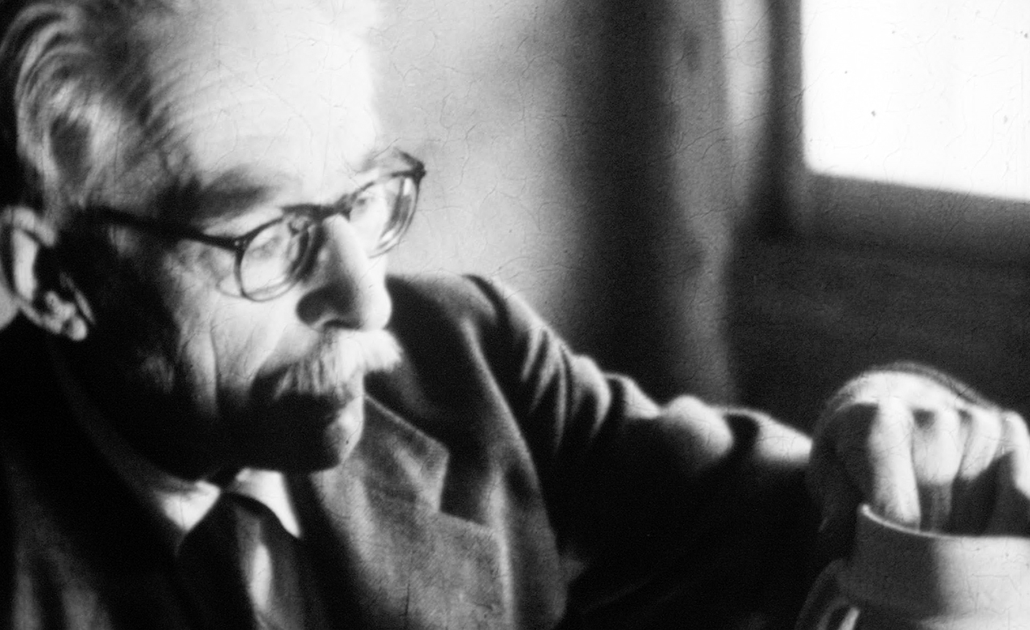In 1974, while doing research for my film Potters at Work (1976), I discovered a cache of films that must have provided Europeans with some of the first moving images of rural Japan and its crafts.
I had been re-reading the journals of Bernard Leach in A Potter in Japan (1960) and was astonished to find the following from 1934:
“ When I showed my film to the local potters one evening they roared with derisive laughter when they saw her (Minagawa Masu) on the screen and she, sitting amongst them, laughed too.”
Bernard Leach made films in Japan in 1934? Where were they? Would he still have them?
With some trepidation, I phoned The Leach Pottery from Canada and had a brief conversation with his wife Janet Darnell Leach, who confirmed that they still had the films, but was not at all optimistic about what condition they might be in. I became more determined than ever to find out for myself.
As luck would have it, my first short film (As We Are, 1974, 30 minutes) was invited to the London Film Festival, providing an opportunity to call Janet Leach once again and propose a visit. She said simply that if I had time to waste on what might well be a lost cause, she’d welcome me.
Janet picked me up at the station and handed me a key to the small private office at the back of the world famous pottery showroom. Rusty old film cans were waiting in a neat pile. She and Bernard later told me they were quite relieved that I had shown up – they’d been wondering what to do with his films which had been sitting neglected for close to half a century.
I had brought along some film-viewing equipment from Canada and set to work. What I saw that day was clearly of historical importance. The shooting was not professional to be sure, but absolutely riveting. Leach had filmed throughout Japan in 1934-35. The people introduced in his writings were there – in motion. Here was Hamada Shoji at home and in his workshop, Kawai Kanjiro at work, Minagawa Masu painting teapots in Mashiko and much more. What is most important is that these films follow Leach’s very first visits to the pottery villages of rural Japan.
Additional reels contained brief glimpses of other crafts; on the final reel were scenes of visits to Hong Kong, Singapore and Korea in 1935.
The films were in very bad condition, severely shrunk, mouldy in sections. Many of the original handmade splices were falling apart; some sections were so fragile that I was forced to use a magnifying glass to look at frames one at a time. I was not at all confident that anything could be done.
During my several days examining the films, Janet made sure I had plenty of time to visit with Bernard Leach himself. He was almost blind by then and eager to reminisce. I had been to Japan only twice at that point but somehow managed to keep up the conversation. The DVD box set will include excerpts from the recordings taken when we met.
More surprises awaited me. Before I left St Ives after that first visit, Bernard and Janet decided to show me a box of other films collected over the years. In that box were The Leach Pottery, 1952 and a fine series of craft documentaries produced by Japan’s foreign cultural agency, Kokusai Bunka Shinkokai. One was the film Mashiko Village Pottery, Japan 1937. A remarkable historical document, this professionally made film follows the entire process of pottery manufacture at the workshop of Sakuma Totaro, the very workshop where Hamada Shoji had stayed when he first arrived in Mashiko.
Both films contain the only filmed record of the legendary teapot decorator Minagawa Masu of Mashiko, about whom Leach wrote:
“ …(she)…drew the patterns of an era elsewhere lost … lightly and with amazing swiftness and impersonal beauty of traditional touch.”
The Japan Foundation, successor organization to the Kokusai Bunka Shinkokai, has kindly agreed to permit inclusion of this important film in this project.
Bernard Leach and Janet Darnell Leach passed along the extraordinary filmed legacy now in my possession. Back in Canada, I was fortunate to find several retired film technicians who had trained at the National Film Board of Canada and were experts in the then nascent art of film restoration. With the support of the Human Studies Film Archive of The Smithsonian Institution and Canada’s National Film Archive, I restored the films and sent one new 16mm print back to The Leach Pottery and to the supporting institutions in the United States and Canada where they are still held.
I am calling these films Trip to Japan, filmed by Bernard Leach, 1934-35.

